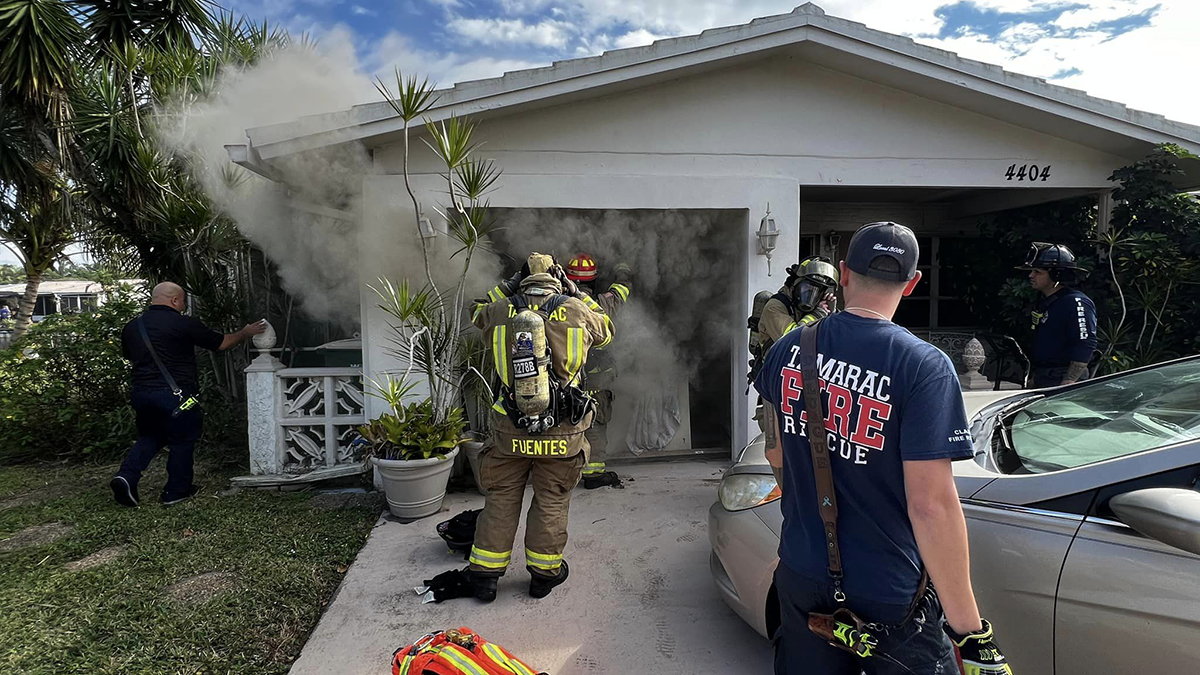The fate of an endangered butterfly species in the Florida Keys may rest on the fragile wings of a single female Schaus swallowtail and a handful of caterpillars captured in Biscayne National Park, according to University of Florida researchers hoping they have a second chance to save it from extinction.
A breeding program for the Schaus swallowtail that the university began in 1992 just before Hurricane Andrew swept away much of its tropical hardwood habitat is credited with saving the butterfly once.
Thousands of butterflies were released back into the wild over the next four years, but the Schaus swallowtail population dropped again over the next two decades as a series of droughts dried out its decreasing habitat. Only four of the butterflies were found in the wild last year in surveys conducted by university researchers, volunteers, and state and federal wildlife agencies.
“That was very alarming because there should be hundreds of individuals out there,'' Jaret Daniels, a butterfly specialist at the university's Florida Museum of Natural History and the project's lead researcher, said Monday.
Young Cancer Patients Treated to Day at the Seaquarium
Federal wildlife authorities issued an emergency order last year authorizing the capture of up to four female Schaus swallowtail butterflies for another captive breeding program at the university.
It took until May 21 for researchers to catch one female, though researchers did spot seven adult butterflies in the wild this spring. A caterpillar that hatched from the single egg laid by the captured butterfly is being taken to Gainesville with seven other caterpillars found in the Keys.
Local
There's no guarantee that safeguarding the butterflies in a lab, breeding more butterflies and releasing them into the wild will save the Schaus swallowtail from extinction, but there's really no other option, Daniels said.
"That's the only logical next step at this point,'' he said. "We know how to do it, we've done it in the past and I'd rather go out swinging than sit back and watch an organism go extinct.''
Peanut the Orangutan Doing Well a Year After Lymphoma Diagnosis
While the captive breeding program is revived in Gainesville, efforts to restore native plants and remove exotic plants from the national park will continue so that any butterflies that are released find more habitat available, said Mark Salvato, lead butterfly biologist at the U.S. Fish and Wildlife Service.
"That wasn't necessarily done on the scale that it should have been'' during the previous captive breeding program, he said.
The Schaus swallowtail is a large yellow butterfly with a stained-glass pattern on its lower wings and up to a 5-inch wingspan. It was once found from the Middle Keys north through Miami, but now it is limited to northern Key Largo and Biscayne National Park.
Its decline has been blamed on drought, insecticides and habitat loss from development. It was federally listed as an endangered species in 1984.
Experts Say 5 Rare Florida Butterflies May Be Extinct
What's particularly puzzling is that the Schaus swallowtail has declined even where its habitat is protected within the national park, Daniels said.
"If they're declining, you know other species are declining,'' Daniels said.
The Schaus swallowtail isn't the only butterfly species in the Florida Keys that has struggled to survive. Other challenges the delicate creatures face include exotic predators such as green iguanas that eat the plants that shelter their eggs and caterpillars and tropical weather that can wipe out remaining habitat.
The Miami blue butterfly was believed extinct after Hurricane Andrew, until a small population was discovered seven years later in a Keys state park.
That population has since disappeared, and in spite of a University of Florida breeding program that released 30,000 of the butterflies in the Upper Keys to try to expand its range, now Miami blues are found only on a remote island within the Florida Keys National Wildlife Refuge.



